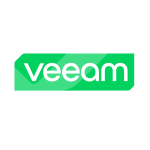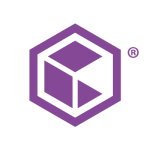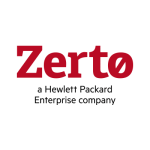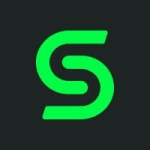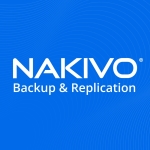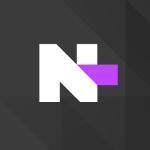What is our primary use case?
Our primary use case is on-premises backup and cloud DR. We're using the Rubrik appliance with their CDM technology for our on-premises solution. We are also using their CloudOut technology to leverage their cloud DR as part of their offering.
We're backing up Windows infrastructure and on-premises applications such as SQL and Exchange file servers, and we're storing that locally on their appliance. Then, we replicate our environment to the cloud so that in the event of a true disaster, where we lost our physical infrastructure, we'd be able to spin up in the cloud, using their CloudOut technology. This would allow us to be up and running in the cloud until we were able to get infrastructure back online.
The environments that we are backing up are physical and virtual. We don't have any cloud-native environments, so we're not doing any cloud backups right now. We use the cloud, although it is a DR target. Our main task is VM backup, which is between 75% and 80%. We have a few physical boxes that we're backing up, as well. For example, I have the actual hypervisors to back up, and then a few miscellaneous other servers that haven't been virtualized.
The applications and servers that we protect include Microsoft Hyper-V for our virtualized infrastructure, Microsoft SQL server for the SQL side, and all of the other infrastructure, in terms of applications, that is Windows-based. We are very invested in the Microsoft platform and using Rubrik to back all aspects of that up. We do have a couple of Linux-based services running, but I would say that we're 95% Windows-based, whether that's Hyper-V VMs or Microsoft SQL, or Microsoft file servers or IAS app servers.
How has it helped my organization?
One of the ways that Rubrik has improved the way our organization functions is time savings. Coming off of the backup solution we had before, we were spending several hours a week, every day sometimes, dealing with backups that fail. Other issues include trying to make space or deal with an archive target that was offline. We were just spending a lot of time on it.
Being a smaller team, when we spend time just dealing with the backups, that takes away from us being able to work on other projects that support the business growth and support other functions within the organization. With Rubrik, there'll be weeks sometimes that I never log into it. Maybe two, three weeks at a time, I never log into Rubrik because we get email alerts and they have great error handling. If there's an error or something happens, we get an email.
A lot of times, the appliance will take care of itself and then deal with that missed backup, or whatever happened. But that's very rare. It'll go for several months without having an error. A lot of times, the errors are not a Rubrik issue. It's always that Windows did something that caused the backup to fail and Rubrik reruns it, then it works.
Not having to spend any time in the console because we can rely on the alerting and automated reporting has allowed us to focus on other areas of the business and not deal with backups. Essentially, it gives us peace of mind that Rubrik works. It was definitely a change to get used to, not logging in to it. We buy this really cool piece of technology and turns out that we're not in it a whole lot, but that just goes to show Rubrik has a robust solution that we can depend on.
This product has definitely increased productivity because we're not dealing with backups. They work on their own and it does its thing. We made the investment into Rubrik to not have to deal with backups and it delivers on that. This leaves us time to focus on other things because we're not dealing with a backup that failed.
It is difficult to put an exact number on the amount of time that we're saving by using Rubrik, although, with our previous solution, there were weeks where we had to spend several hours dealing with failed backups. On a bad week, it may have been between six and eight hours. On average, by not dealing with backups at all, we are saving several hours a week.
Using the SLA-based policy automation has simplified our data protection operations. We are no longer scheduling backups or trying to figure out availability, or time slots, where we can back up our systems. For example, we don't have to consider things like we've got backups running at 1:00 AM, 2:00 AM, or 3:00 AM, and we're trying to find a slot. Instead, the SLA engine that they have is super easy to use and does that job for us.
It was really good for us to move to the SLA-based approach from a traditional backup because we were able to, for business use, cover tasks such as retaining email for one year. In their SLA engine, it's very easy to find that. Another example might be backing up a set of test-SQL servers where we only need 14 days. Through the policy engine, you set what you want the retention to be and it takes care of scheduling and managing those backups.
Once we have them set, they are stable and continue to work because we don't change SLAs often. We define the retention that we need for each app and each service, and then it just works. Overall, the SLA-based approach makes it very easy to achieve your backups.
Luckily, we have not used their ransomware recovery. We've not had any incidents or ransomware where we needed to, but we have tested recovering assets in the event that happens and we've always been able to recover in our test scenarios, in our tabletop exercises. This is the type of feature that you never want to rely on outside of testing because it means that you're having a bad day, so hopefully, we never have to use it. That said, if we do have to, we're confident that it would deliver.
Similar to the case with ransomware, we have been lucky in that we haven't had any major disasters where we had to fully recover anything. In the usual case, where files are lost because something is overwritten, or something gets deleted, it has definitely saved a lot of time with the instant recovery.
Using the predictive file search, we're able to put those files or directories back or roll back a database in a few minutes. It's very quick and has definitely reduced our recovery time. We've not had to do a lot of restores, but when we do have to restore the occasional file or put a database version back, it's very quick and has saved us quite a bit of time from what the old Unitrends system would have looked like.
This product has also saved us time with respect to managing backups. Prior to Rubrik, every day of the week, we were spending an hour or two hours or sometimes longer dealing with backups, and that's now completely gone. There are some times that we go for weeks and don't even log into the appliance because we get the reports and they tell us everything we need. We trust Rubrik because we've had it long enough now that we know that when it says it completed the backup, the backup's there, and if we need it, we can get it back.
What is most valuable?
The most valuable feature is the Instant Recovery, where we can restore a VM or SQL database or any server or application, and have it up and running on their appliance within a few seconds. The recovery time of the instant restore is instantaneous and there is no complexity to it. What we're recovering doesn't matter to them, and we don't have to wait for it to mount a recovery image or do anything like that. When they say instant, they mean instant.
The ease of use is important to us, as well. It's super easy to get set up. Within a few hours of them deploying the on-premises appliance, we were backing up data locally into the cloud and able to test restores.
Rubrik is really good about releasing updates and we have had no issues with the process. They make it very easy, working with their support when they do put out an update, and they assist with doing the health checks beforehand to ensure that there are no issues. They do a pre-flight check on those updates to ensure that they're compatible with the appliance. Then, we schedule a time off-hours to apply it. They are normally pretty quick and we've never had issues where we had to roll back. They've always been flawless updates.
The CloudOut technology allows us to replicate data in our environment to the cloud, and then it can be spun up and used in the cloud if our physical environment is not available.
The VM backup and the SQL backup are blazingly fast for both backup and recovery.
The web interface is really good. and it's only gotten better with every update. It was good, to begin with, but they've improved the speed and added features in each update. It is a modern interface that works in any browser, and we can get to it from a tablet or computer. The type of device you access it from doesn't matter because it fits all screens, and it's intuitive and easy to use.
The archival functionality is very good. It is very easy to archive data to the cloud, and this is something that we were looking for. You can do it all from their web interface, which is a plus. You don't have to jump into the command-line interface or run scripts or anything to make it work. It is all configurable in the UI and very easy to dump data off to the cloud and pull backups back from the cloud archives.
We have used the predictive search functionality and hands down, it's the easiest way that I've ever recovered files. It's just like searching Google, but it searches your own files for recovery. It's easier than if you told somebody you could use a Google-like search to recover files, I don't think they would believe you until they've used Rubrik, because it does work that well. It's quick to search, no matter if you're searching a VM or even a physical box, it works across them.
With their new global file search in the latest version of their CDM, you don't even have to know what host that file was on. You can just type in a file name or a part of the file name and it'll find it. When a user comes and says, "We lost the file and it was called something like this," with any other solution, I don't know how you would find it. I think it would take a lot of work. With Rubrik, within a few seconds, you have file results. It's a pretty great feature.
What needs improvement?
We would like to see more support for Hyper-V. They support Hyper-V and it works with our CloudOut, the cloud DR, but they seem to add features for VMware first and Hyper-V gets added second or sometimes several releases after the VMware feature comes out. Seeing more support for Hyper-V would be a plus.
For how long have I used the solution?
We have been using Rubrik for about a year and a half.
What do I think about the stability of the solution?
This solution is very stable, dependable, and reliable. We've had it for a year and a half and nothing has ever happened with the appliance, or come up where we'd think differently.
Their updates have been really good and we've never had an issue after applying an update where something didn't work.
Knowing that Rubrik has built a robust platform, which is what we're dependent on, gives us peace of mind.
What do I think about the scalability of the solution?
This solution is highly scalable. You can add nodes as needed and expand the environment. There are no limitations to it in terms of hardware or Rubrik's support.
In order to expand, you would have to purchase licensing. Depending on the company's budget, that could be a limiting factor. As long as you can afford the licensing, if you grow then Rubrik can grow with you.
There are three of us in the company who use the product from a management standpoint. I am the system administrator, the CIO has access, and then the support tech has access to the system. I am responsible for maintaining it.
It is integrated 100% within our organization. We have no plans to do anything more with it because it's being used in every aspect of the business for backup and protection. We're fully invested and committed to it.
How are customer service and technical support?
The vendor has world-class support, and some of the best support we have for our solutions. Rubrik support has been great to work with when we do have to work with them, which isn't often.
Which solution did I use previously and why did I switch?
Prior to Rubrik, we were using the Unitrends solution for our backup. We switched because we couldn't depend on the Unitrends product. It was missing backups, for example. There were some times where every day, every week, five days a week, we'd spend a couple of hours a day, or maybe an hour a day, in Unitrends trying to get backups to run because they would miss a whole set of SQL servers or miss VMs.
We also couldn't do cloud archiving with it. It just wasn't capable of that.
I think we had outgrown the Unitrends solution. I think Unitrends is great for a small company, but anything small to medium and larger, Unitrends just isn't a good solution.
It seems like a very traditional backup solution. It's not forward-thinking and innovative and new like Rubrik is. So, we just knew that we needed something that we could depend on because, with Unitrends, we knew that if there was a disaster, we couldn't recover and so that's why we started looking at something else. We were very happy when we found Rubrik. It restored the peace of mind that we didn't have with Unitrends.
How was the initial setup?
The initial setup is straightforward. Rubrik sends out a technical engineer when you get the appliance to help you get it online. Within a couple of hours of them being on-site, we were backing up data locally, as well as to the cloud. By the time they left, we had tested restores and our environment was backing up locally and into the cloud.
We did not have an implementation strategy and just followed Rubrik's guidance on how to implement it. They had a plan that was based on information that we provided them about our environment. That way, when they were on-site, we maximized our time with them to get it deployed. We really just trusted Rubrik with it.
What about the implementation team?
There were two people from our company and one person from Rubrik involved with the deployment. I was on the technical implementation side, and our CIO was involved in the purchasing, decision-making, and ultimate sign-off on the solution.
The deployment was handled by Rubrik's technical support engineer, who is assigned to you during the sales process. They are somebody local, in fact. They are based in Iowa where we are.
You work with them through the whole sales process and then they help you get the appliance set up and then they're even your contact even after it gets set up. This means that if you ever have questions or you need assistance, they're the person to help and they're very knowledgeable. Our engineer was able to answer any questions we had.
What was our ROI?
In the sense that we're not spending IT resources on managing the solution, that's really been the return on investment.
What's my experience with pricing, setup cost, and licensing?
Rubrik is definitely a premium solution, but if you can afford it and put it in your budget, they're definitely the way to go. They're not the cheapest solution on the block and I don't think they would tell you that they are. You pay a premium for Rubrik, but you're getting a premium service that comes with immutable backups, instant recovery, and world-class support. It's well worth the investment into Rubrik.
In the subscription, they have an appliance renewal program, and the maintenance is set up so that you know, upfront, what the potential increase is. They give you a range.
Which other solutions did I evaluate?
Before choosing Rubrik, we evaluated other solutions including Dell Avamar, which is their data protection solution. We also looked at Cohesity and with respect to Unitrends, we knew that they were out, so we didn't re-evaluate the product.
The results of our evaluation showed that Rubrik really outperformed the others, with just their support of Hyper-V. They all seem to support Hyper-V to some extent, but Rubrik seemed to have the best support for it at the time.
The speed of Rubrik and the ease of use also stood out, compared to the others.
The Dell solution was very much a traditional backup system and we wanted to get away from that. We wanted to go to something that was cloud-ready for archive and DR. We also wanted a product with great support for virtual machines because that's where our infrastructure was going. We just didn't get that feeling with the Dell solution. I'm sure that it is a great product and they probably sell a lot of it, but it wasn't the new solution we were looking for.
Then with Cohesity, we just didn't see it as a good fit. Overall, Rubrik just looked better and fit our needs better. We had to consider the infrastructure and the workloads we were protecting, as well as the features that we were looking for in terms of the easy backup and the immutable backup protection for ransomware, the CloudOut, and cloud DR technology. It all just was a little bit better in Rubrik and just beat out Cohesity.
We are heavily virtualized and have lots of SQL as well, which is why we picked Rubrik. These are two things that they are very good at.
They're definitely a forward-thinking and future-thinking company in terms of offering their VM backup and their SQL backup, so they really shine over the competitors we looked at.
What other advice do I have?
Although the updates are really good, we are a little bit behind for some compliance reasons. However, we have access to all their features and we try to stay as current as possible. We're on almost the latest version.
My advice for anybody who is considering this product is that it's a world-class solution. If you want peace of mind at night, immutable backups, cloud-native support, cloud DR support, all within a single solution with world-class technical support, Rubrik is the way to go. If you can afford it, you're getting the best. You're getting a premium solution and everything that they say they can do, they can do. They can prove it to you or customers can prove it. They've never oversold on what they can offer.
My biggest takeaway is that it's a good investment in your backups. It's not the cheapest solution, but the investment you're making protects your business and ensures that if you ever need your backups, they're going to work. You can trust Rubrik.
I would rate this solution a ten out of ten.
Which deployment model are you using for this solution?
On-premises
Disclosure: PeerSpot contacted the reviewer to collect the review and to validate authenticity. The reviewer was referred by the vendor, but the review is not subject to editing or approval by the vendor.



